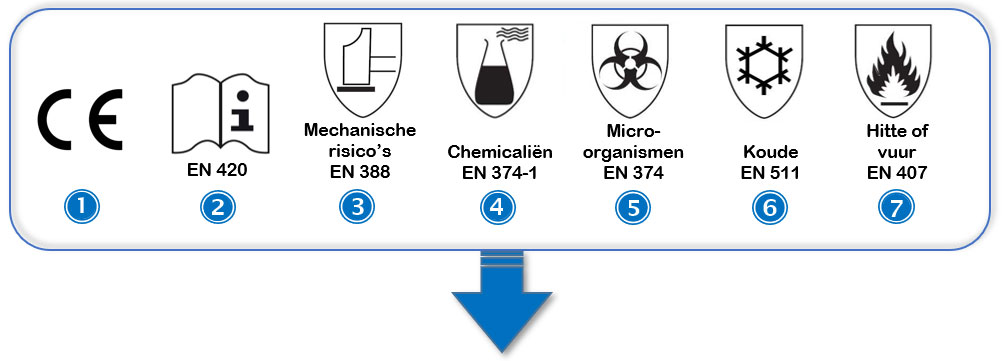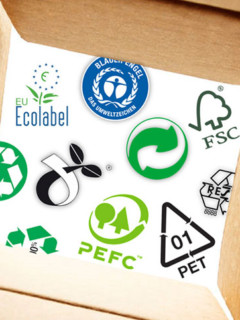You use your hands constantly. As a result, hand injuries are common, even at work. However, your hands are easily protected with the right gloves. Cutting yourself on sharp objects or direct contact with chemicals should no longer be an issue. First make sure you choose the right size with our size guide. Then we will guide you through our wide range of safety gloves to find the perfect pair to suit your work.
► Step 1: How do I determine the size of my gloves?
The size of a glove is always expressed in inches. If you are between two sizes, choose the smaller size. Safety gloves should be close-fitting and still stretch a little over time. To determine the right size, simply follow the sizing guide below. Download the document and print it out in A4 format. That way you can be sure of the correct measurements.
Download our glove sizing guide here ]► Step 2: Should I choose powdered safety gloves?
Besides the size of a glove, it is at least as important to know whether it is powdered or not. This applies especially to disposable gloves made of latex, vinyl or trilite (you can read more about those below). This powder is actually corn starch that helps make the glove easier to put on and take off. Moisture and sweat are absorbed faster thanks to the powder, by the way. This gives you optimal comfort. Powdered gloves are not always recommended, though. In the food industry or a clinical environment, for example, you want to avoid the corn starch mixing with your products.
]► Step 3: What protection should the glove provide?
By now, you have chosen the right size. Now you still have to decide which safety gloves are best suited for your work. The international symbols below will then easily help you on your way.
1. CE-certification
CE stands for Conformité Européenne and is awarded to products that comply with European regulations. These regulations include electrical appliances, toys and personal protective equipment.
2. European standard for protective gloves ⇒ Standard EN 420
This European standard defines some basic requirements for safety gloves. These include, for example, that:
- Work gloves should not contain substances that can cause allergies.
- Gloves should be designed according to the European hand size.
- pH values should always be as neutral as possible.
3. Do you work with machinery? ⇒ Standard EN 388
]This symbol denotes work gloves that protect against mechanical risks: knife cuts, tears, abrasions and even punctures. Below or alongside this symbol, you will see another 4 digits indicating the performance levels. These are expressed from 0 (low protection) to 4 or 5 (the highest protection). If instead of a number there is only an X, this performance does not apply to the glove.
Some special variants are these gloves for handling greasy objects or gloves with an anti-slip coating.
4. Do you work with chemicals? ⇒ Standard EN 374-1
This label is always accompanied by a letter. This indicates the chemical against which the glove provides protection. All RAJA chemical-resistant gloves have an inner textile or cotton finish. This increases strength, durability and wearing comfort. For the outside, you can choose a plain finish that prevents dirt from adhering to the glove. Or you can choose a coated or roughened finish that gives you a better grip. The choice is yours!
5. Do you work with micro-organisms? ⇒ Standard EN 374
Microorganisms can refer to bacteria, fungi and even viruses. For gloves that protect against such hazards, you have a choice of the following materials: latex, vinyl or trilite.
Latex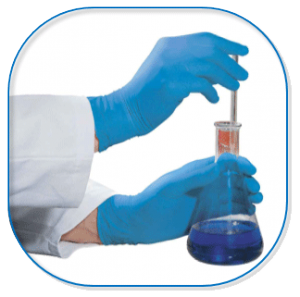 |
– Good protection against biological risks. Ideal for laboratories, hospitals and mechanical industries. – Very comfortable. – Highly elastic. |
Vinyl |
– Ideal for use in cleaning, catering or packaging. – Protects against acids, bases, oils and greases. – Cheaper than latex or nitrile. |
Trilite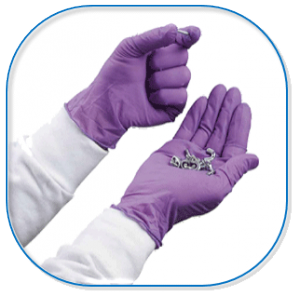 |
. – Mix of latex, nitrile and neoprene: both elastic and very strong. – Increased comfort and extra strong. |
6. Do you work in a cold environment? ⇒ Standard EN 511
You may have to work in a very cold environment for a long period of time. In that case, it is best to look out for a safety glove with the symbol below. Below this symbol, you will often find another 3 digits. These indicate the 3 performances for which the glove was tested. If instead of a number there is only an X, this performance does not apply or has not been tested. View our cold-resistant work gloves here.
7. Do you work in an environment with risk of heat contact? ⇒ Standard AND 407
This symbol indicates that a glove is resistant to thermal hazards. Again, you will often see numbers below the symbol indicating performance levels. Check out our heat-resistant gloves made of polyamide or latex here.
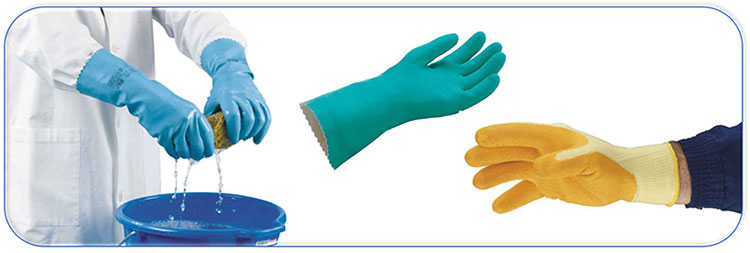
► Step 4: How to choose the right gloves for fine work?
When working with very delicate products such as glass, jewellery or fine electronics, it is best to choose these types:
| Cotton | For fine mechanical work and pleasant wearing comfort. Lint-free. |
| Polyamide | Super-strong: best resistant to tearing and abrasion. Economical and pleasant to wear due to its foam structure. |
| 50% polyamide + 50% polyester | Increased wearing comfort: supple and agile. For precision work and absolute cleanliness. Lint-free. |
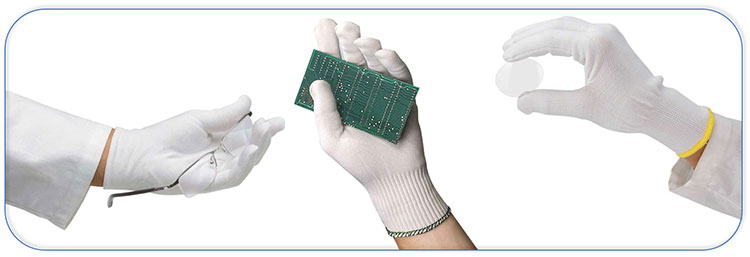
Choose your customised work gloves here












